Recent surveys show that 46% of companies are not planning a total return to the office. Thus, most people are working in a remote or hybrid role permanently, living across devices in enterprise messaging platforms like MS Teams, Slack, Zoom, and Google Workspace.
On the other hand the important data that your business runs on and depends on is in your CRM and maybe one or two other systems of record.
So companies are finally realizing that it makes perfect sense to engage people where they are already working vs. asking them to jump from one application to another in order to get what they need.
Workflow signals
Here are just a few example situations that if paid attention to and communicated to the right people at the right time could optimize your sales processes and improve business outcomes. You may notice some similarities with Salesforce Einstein Insights, but this list can go on and on, and is not limited to just Opportunities and Leads.
- A new lead is created.
- A big opportunity has just been won (or lost).
- Detect opportunities that are taking too long to close.
- Detect an important opportunity that had a setback (close date moved or stage changed).
- Detect open opportunities that have not been updated and/or have not had any activity for a long time.
- Detect open opportunities that are closing soon but have not been updated recently.
- Detect product licenses that are expiring soon.
Imagine that those signals could be delivered to the right people, at the right time across your entire workforce.
Well, with Salesforce Flow it is possible to implement all those monitoring mechanisms (using record-triggered or schedule-triggered flows), and create what I call workflow signals.
Integrating with the messaging apps
You can configure Salesforce Flow to generate many kinds of useful workflow signals, but notifying the right people in the right communication channels is not something Salesforce offers out of the box.
Leverage the way people work to increase visibility and engagement!
Yoxel Workspace Sync package and its Yoxel Signals companion apps are here to help you deliver those workflow signals to your choice of messaging app and channel (MS Teams, Google Workspace, Zoom, Webex).
Let’s examine the ‘expiring licenses’ scenario which uses the sfLma__License__c custom object that Salesforce ISV partners would be familiar with. Here is a complete schedule-triggered flow:
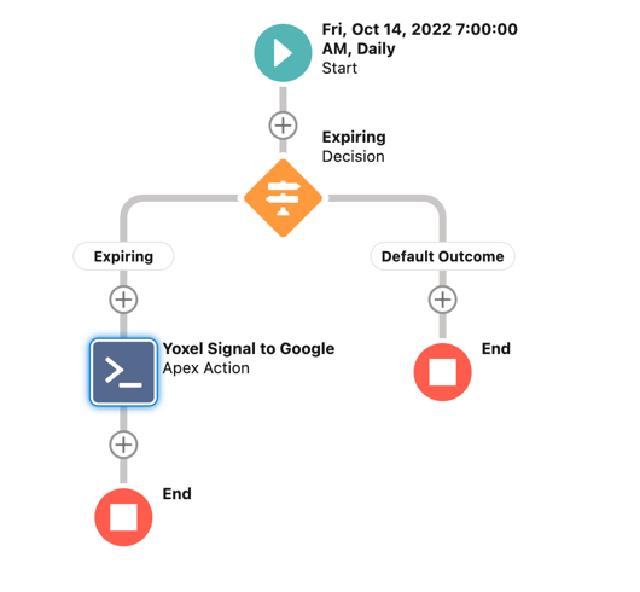
- The flow runs daily, and examines active licenses:
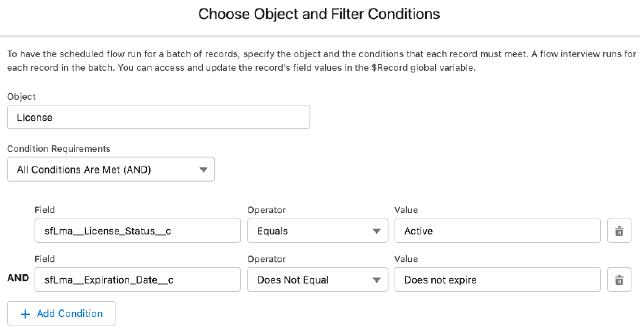
- Then it evaluates every record using the decision element : detect active licenses expiring in the next 60 days.
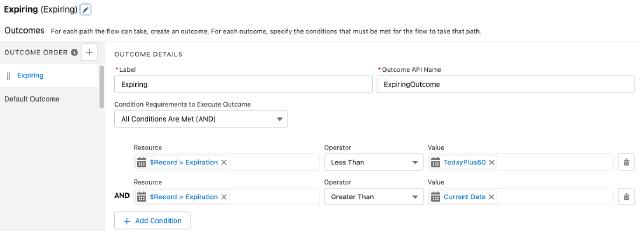
- We had to define the TodayPlus60 resource to be able to compare the Expiration date field.

- When the decision is evaluated to TRUE we use the Yoxel Signal Apex Action to notify users in our Google Workspace, in the space/channel identified by the integration token which we got earlier from the Yoxel Signals app for Google Workspace. The Yoxel Signals app is also available for Microsoft Teams and Webex.
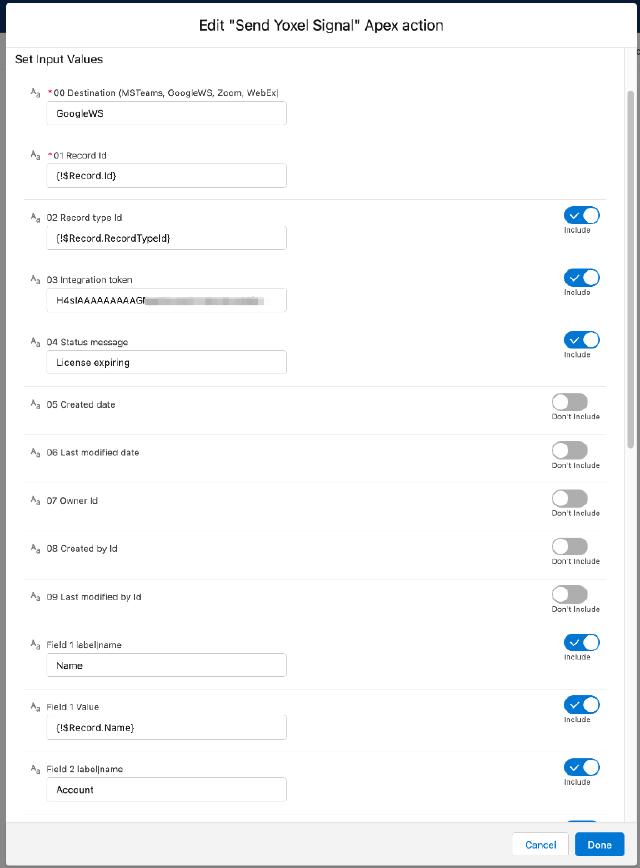
- This is how the signal shows up in the space/channel:
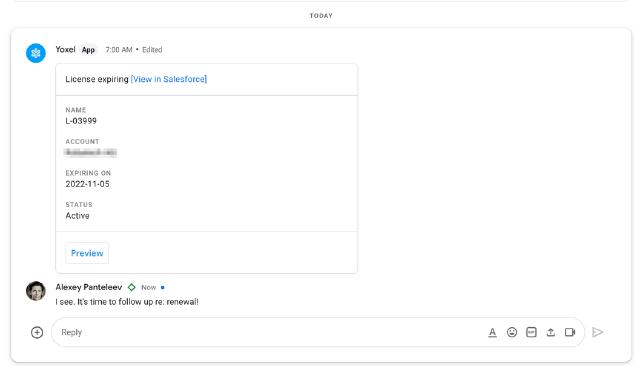
- Users can access the CRM record right from their messaging app (using the Preview button). They can navigate to a parent record, i.e. Account and share the record to the space/channel again.
Conclusions
Salesforce Flow is a very powerful automation tool, but it lacks external integrations and hence its potential to reach the right people at the right time is limited. By connecting your flows with the messaging apps you will start creating new engagement platforms that unlock the power of collaboration and empower your entire workforce.
